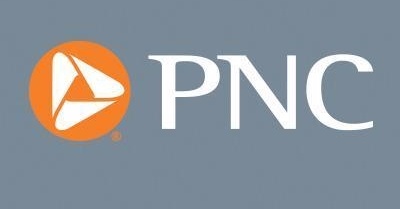
Although Income Did Not; Mixed Inflation Readings
- Consumer spending rose 1.1% in March, due to both higher prices and higher volumes.
- After-tax income rose 0.5% over the month.
- Inflation was high, with prices up 1.1% from February to March. Inflation was much lower excluding volatile food and energy prices, however.
- On a year-ago basis overall inflation was at the fastest pace in 40 years.
- Consumer spending growth should remain strong throughout 2022.
- The FOMC will raise the fed funds rate by 0.50 percentage point next week in effort to slow inflation. Interest rates will rise throughout 2022.
Consumer spending rose 1.1% in March from February, before inflation. This followed a 0.6% increase in February (revised up from 0.2%) and a 2.0% increase in January (revised lower from 2.7%). Spending on services increased 1.1%, and spending on nondurable goods rose 2.5% because of higher gasoline prices. Spending on durable goods fell 1.0%, in large part due to lower auto sales because of shortages.
Personal income rose 0.5% before inflation in March from January, following increases of 0.7% in February (revised up from 0.5%) and 0.2% in January (revised up from 0.1%). Wages and salaries rose 0.6% because of strong job growth and rising wages in the tight labor market. After-tax personal income also rose 0.5% over the month.
With spending up more than income, the personal saving rate fell to 6.2% in March from 6.8% in February; it was down from 7.7% in the fourth quarter of 2021.
The personal consumption expenditures price index jumped 0.9% in March from February; this was the biggest one-month jump in prices since 2005. Higher energy prices in the wake of the Russian invasion of Ukraine were the catalyst for the spike in inflation. The index rose 0.5% in both January and March. But the core PCE price index, excluding volatile food and energy prices, rose a much more moderate 0.3% in March, the same pace as in February and down from 0.5% in January.
On a year-ago basis overall PCE inflation was 6.6%, up from 6.3% in February and the fastest pace since 1982. But core PCE inflation actually slowed slightly on a year-over-year basis in March to 5.2%, from 5.3% in February. This is still close to the fastest pace in four decades, however.
Despite high inflation consumer spending, adjusted for prices, rose 0.2% on the month, the third straight increase in real spending. Real after-tax income fell 0.4% in March, however. It is been steadily falling since the fall of 2021 due to reduced government transfer payments and high inflation, and despite job growth and rising wages.
The spending and income report for March was a mixed bag. Inflation was very high over the month as the Russian invasion of Ukraine pushed up energy prices. But despite this, consumers continued to boost their spending; it rose even after adjusting for much higher prices. On the other hand, after-tax income fell after adjusting for inflation. But with consumers having saved up an extra $2 trillion in the aftermath of the pandemic thanks to government assistance and limited opportunities to spend, they can weather higher prices for now.
Other positives for consumer spending in 2022 are the very strong labor market and record-high household wealth, due to rising home values and a still-elevated stock market even with recent price declines. However, rising interest rates this year will become more of a drag, especially for big-ticket items. Gas prices have come down in April, which will provide some relief to budgets. Household spending will shift from goods to services over 2022 as consumers are more willing to go out as the pandemic recedes; they also need fewer goods after the surge in purchases over the past couple of years. With consumers still in good shape the U.S. economy will continue to expand in the near term; household spending makes up two-thirds of U.S. GDP.
Although topline inflation was very high, core inflation was much lower. Indeed, core inflation slowed on a year-over-year basis in March. The Federal Reserve is more focused on core inflation, because it is more responsive to monetary policy and the headline number may not measure trends in underlying inflation pressures. But inflation is still much higher than the Federal Reserve’s 2% inflation objective.
PNC expects the Federal Open Market Committee to raise the federal funds rate by 0.50 percentage point when it meets next week, to a range of 0.75% to 1.00%. The FOMC will further increase the fed funds throughout the year, with the rate ending 2022 somewhat about 2%. By raising the fed funds rate the central bank is hoping to slow economic growth and cool off inflationary pressures in the U.S. economy without causing a recession. The next couple of years will be bumpy ones for the economy, with high inflation and slower growth. The likelihood of recession in the U.S. is now about 30%, up from 15% before the Russian invasion of Ukraine.
The PNC Financial Services Group, Inc. is one of the largest diversified financial services institutions in the United States, organized around its customers and communities for strong relationships and local delivery of retail and business banking including a full range of lending products; specialized services for corporations and government entities, including corporate banking, real estate finance and asset-based lending; wealth management and asset management. For information about PNC, visit www.pnc.com.













